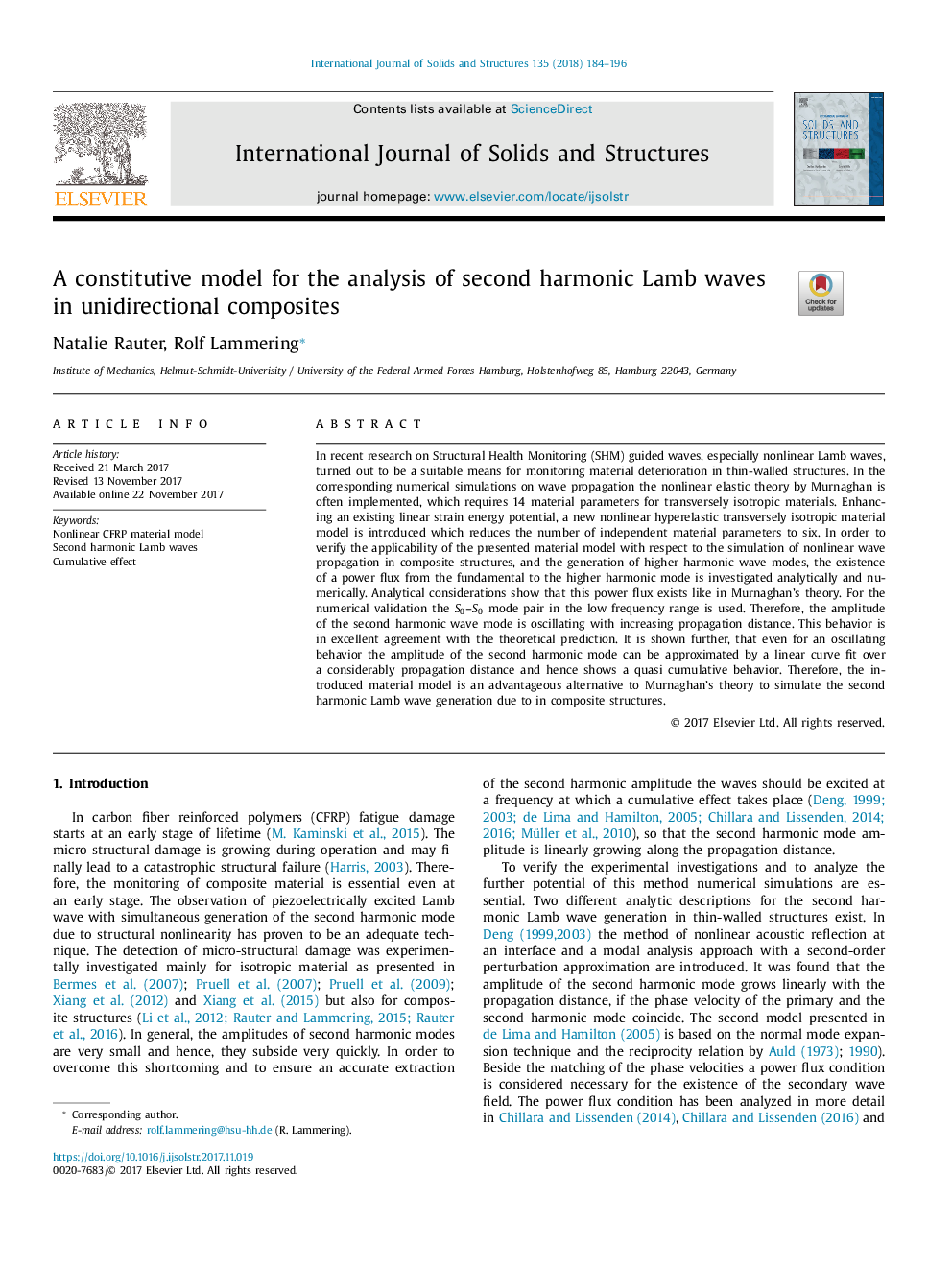| Article ID | Journal | Published Year | Pages | File Type |
|---|---|---|---|---|
| 6748422 | International Journal of Solids and Structures | 2018 | 13 Pages |
Abstract
In recent research on Structural Health Monitoring (SHM) guided waves, especially nonlinear Lamb waves, turned out to be a suitable means for monitoring material deterioration in thin-walled structures. In the corresponding numerical simulations on wave propagation the nonlinear elastic theory by Murnaghan is often implemented, which requires 14 material parameters for transversely isotropic materials. Enhancing an existing linear strain energy potential, a new nonlinear hyperelastic transversely isotropic material model is introduced which reduces the number of independent material parameters to six. In order to verify the applicability of the presented material model with respect to the simulation of nonlinear wave propagation in composite structures, and the generation of higher harmonic wave modes, the existence of a power flux from the fundamental to the higher harmonic mode is investigated analytically and numerically. Analytical considerations show that this power flux exists like in Murnaghan's theory. For the numerical validation the S0-S0 mode pair in the low frequency range is used. Therefore, the amplitude of the second harmonic wave mode is oscillating with increasing propagation distance. This behavior is in excellent agreement with the theoretical prediction. It is shown further, that even for an oscillating behavior the amplitude of the second harmonic mode can be approximated by a linear curve fit over a considerably propagation distance and hence shows a quasi cumulative behavior. Therefore, the introduced material model is an advantageous alternative to Murnaghan's theory to simulate the second harmonic Lamb wave generation due to in composite structures.
Keywords
Related Topics
Physical Sciences and Engineering
Engineering
Civil and Structural Engineering
Authors
Natalie Rauter, Rolf Lammering,
